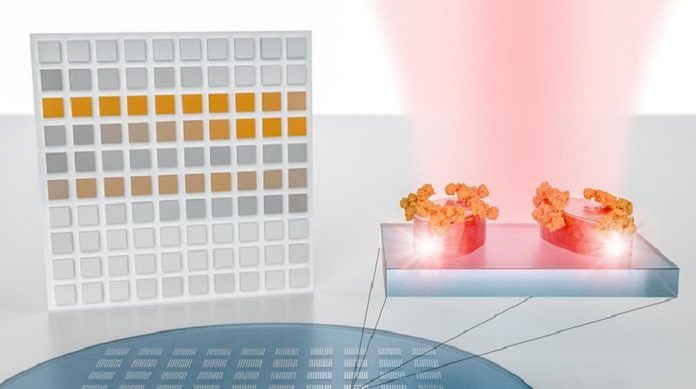Now it is possible to detect and analyze molecules with very high precision without requiring bulky equipment, thanks to the new nanotech sensor developed by EPFL scientists. The sensor can identify a molecule’s absorption characteristics without using conventional spectrometry.
The system comprises a designed surface secured with many small sensors called metapixels, which can produce a particular bar code for each particle that the surface comes into contact with. These barcodes can be massively analyzed and arranged using advanced pattern recognition and sorting innovation, for example, artificial neural networks. It opens the door to large-scale, image-based detection of materials aided by artificial intelligence.
The chemical bonds in organic molecules each have a particular orientation and vibrational mode. It impacts the way particles absorb light, giving each one a special “signature.” Infrared spectroscopy identifies whether a given molecule is available in an sample by checking whether the sample assimilates light rays at the molecule’s mark frequencies. Be that as it may, such examinations require lab instruments with a strong size and price tag.
This nanotech sensor is both highly sensitive and capable of being miniaturized. it utilizes nanostructures that can trap light on the nanoscale and in this manner give high detection levels to tests at first glance.
The system’s nanostructures are grouped into what are called metapixels so that each one resonates at a different frequency. When a molecule comes into contact with the surface, the way the molecule absorbs light changes the behavior of all the metapixels it touches.
Andreas Tittl, lead author of the study, “Importantly, the metapixels are arranged in such a way that different vibrational frequencies are mapped to different areas on the surface. This creates a pixelated map of light absorption that can be translated into a molecular barcode – all without using a spectrometer.”
Aleksandrs Leitis, a co-author of the study said, “Thanks to our sensors’ unique optical properties, we can generate barcodes even with broadband light sources and detectors.”
Dragomir Neshev, another co-author of the study said, “For instance, it could be used to make portable medical testing devices that generate barcodes for each of the biomarkers found in a blood sample.”
This research – which sits at the crossroads of physics, nanotechnology and big data – has been published in Science.
